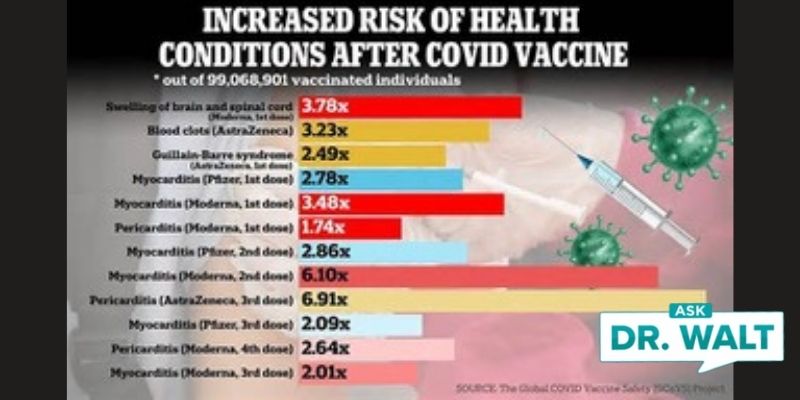Vaccine Myth #13: Vaccinations are made from aborted babies
Fringe Autism Treatment Could Get Federal Study
July 9, 2008Doctors and Families Asked to “Just Say no to New Aborted Fetal Vaccine!”
July 9, 2008This is the end of my 13-week series on Vaccine Myths. I hope the series has been helpful to you. Today, I’d like to address the fact that some people have questioned whether the use of fetal cells in the production of vaccines is moral and ethical. This question is timely due to a news story just out: Doctors and Families Asked to “Just Say no to New Aborted Fetal Vaccine!”
One of my foundational ethical principles is that human life is sacred from the moment of conception when a new, unique human being is formed. This is a position I will never compromise for the sake of “medical research” or for the good of “science.”
Having said that, let me explain that a line of human cells (known as WI-38) used to grow viruses for research is believed to have begun from the tissue (cells) of a legally aborted fetus in Sweden.
These cells are used in the production of the rubella portion of the MMR-II vaccine.
Dr. Leonard Hayflick at the Wistar Institute (thus the WI in the name of the cell line) developed the WI-38 cell line in 1962.
A second cell line, MRC-5, has been used to develop the vaccines called Vaqta and Havrix (administered to prevent hepatitis A). It’s also used in a newly licensed vaccine, Pentacel, made by Sanofi Pasteur (Pentacel is a combination vaccine of Diptheria, Pertussis, Tetanus (DTaP) plus HiB and Polio.).
In addition, the Varivax vaccine for the chicken pox virus has been produced from both the MRC-5 and WI-38 lines.
As for the origins of MRC-5, the Physicians Resource Council of Focus on the Family has found that this particular cell line was developed from the cells of a preborn infant who was aborted by the mother for “psychiatric reasons,” although specific details haven’t been revealed.
For references on the issue of tissue cultures being derived from an aborted fetus, see the note on page 321 of my book God’s Design for the Highly Healthy Child.
As tragic and potentially unjustifiable as these two abortions may have been, they were apparently not performed with the intent of carrying out scientific or medical research.
Although I abhor the practice of abortion, using these cell lines to continue to develop vaccines does not necessarily constitute formal cooperation in the act of abortion.
Killing an unborn child is an ethically distinct act from that of producing a vaccine after the abortion has already been performed.
Furthermore, no ongoing abortions are required to continue production of these vaccines. Cell lines derived from fetal tissue can be duplicated and grown in culture for decades, and thus additional abortions aren’t necessary to replenish the vaccine supply.
For these reasons, I join the vast majority of faith-based medical ethicists who don’t believe that producing or administering a vaccine made in the past from the cells of an aborted fetus is an evil act.
Beyond the shadow of a doubt, moral people should speak out against unethical and immoral practices. I would never justify conducting an immoral practice so that something positive can result.
However, in this case I can recommend these vaccines to concerned parents who have an obligation to care for their children’s health.
I think of this situation as being comparable to letting your child receive an organ from a murder victim. The crime that led to the organ’s availability was awful, deplorable, and punishable. But the organ itself is useable, and its use does not, in my opinion, take on any immorality of the act that led to its availability.
Nevertheless, I completely support individual conscience. Due to the complex and highly controversial nature of this issue, it’s understandable that some parents will still feel uncomfortable utilizing vaccines that are the byproduct of abortion.
In the case of Pentacel, a pro-life group, Children of God for Life, points out, “If a 5 in 1 vaccine is desired, why not recommend the ethical version Pediarix, made by Glaxo SmithKline?”
They go on to say, “The only difference between the two is that Pediarix protects against Hepatitis-B instead of HiB. Doctors using Pediarix today give separate shots for HiB. With Pentacel they will still have to give separate shots for Hepatitis-B so its not like Pentacel is reducing the number of injections.”
In May 2006, the Catholic Medical Association issued a formal statement noting that, “When alternative vaccines are available, they must be used in place of those produced by immoral means.” Likewise, the Christian Medical and Dental Association have repeatedly called on the industry to stop using aborted fetal cell lines in vaccine production.
Although I am comfortable with parents who choose this alternative for their children, I also believe it’s ethical for parents to choose the new vaccine – or vaccines made with the WI-38 cell line.
You can read more about vaccine myths in my book God’s Design for the Highly Healthy Child.
Here are other blogs in this series you might find useful:
- Radio Listeners ‘Angry as Hornets’ About Dr. Walt’s Comments on Childhood Vaccination
- Doctors Debate Delayed Vaccine Schedule
- More on the Risks of Not Vaccinating Your Children
- Separating Swine Flu Myths From Facts
- Vaccine Myth #1: Vaccines Cause Autism
- Vaccine Myth #2: Vaccines Don’t Work
- Vaccine Myth #3: Vaccines Aren’t Necessary
- Vaccine Myth #4: Vaccines Are Unsafe
- Vaccine Myth #5: Infants Are Too Young to Get Vaccinated
- Vaccine Myth #6: It’s Better to Be Naturally Infected Than Immunized
- Vaccine Myth #7: Vaccines Weaken the Immune System
- Vaccine Myth #8: A Preservative Contained in Many Vaccines Harms Children
- Vaccine Myth #9: Vaccine-Preventable Diseases Occur More Often in Vaccinated People Than in Unvaccinated People
- Vaccine Myth #10: Vaccines, If Administered during the First Two Years of Life, Can Cause Diabetes
- Vaccine Myth #11: The DTP Vaccine Caused Deafness in the 1994 Miss America Beauty Pageant Winner
- Vaccine Myth #12: The Polio Virus Vaccine Is Contaminated with a Virus That Causes Cancer
- Vaccine Myth #13: Vaccinations are made from aborted babies







0 Comments
Since this isn’t a myth, I suggest you not classify it as one…
I agree with Christina. This is not a myth as you point out. From the information I read on the Children of God website, the rubella vaccine abortions were performed with the intent of producing a vaccine.
I agree your headline to get attention is very misleading.
Considering it is not widely known that aborted cells are used I think you could have said it differently.